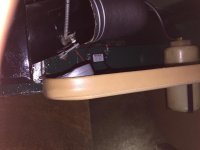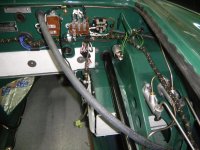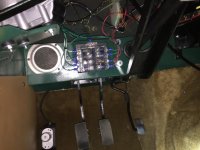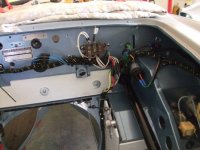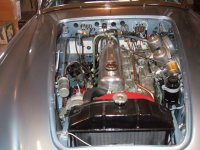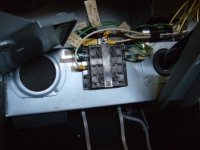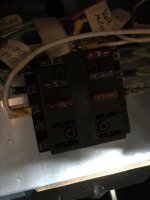I'm seeking advice because I want to get this right the first time. And properly protect my car, a BT7.
Project: replace standard fuse block with a Charlie Hart fuse block with 6 fuses. Can't seem to fit that seventh fuse due to space limits.
Proposed layout:
Fuse #1 to: Headlight relay and electric pusher radiator fan, 25 Amp, from: Brown wire from starter solenoid
Fuse #2: to: Horns, 25 Amp, from: same brown wire as above via short bus or jumper
Fuse #3 to: Fuel gauge/heater and turn signals, 15 Amp, from: switched white wire from ignition/coil
Fuse #4 to: Wiper motor and flasher unit, 15 Amp, from: same white wire via bus
Fuse #5 to: Stop lamp and fuel pump, 15 Amp, from: same bus
Fuse #6 to: Overdrive relay and radio, 15 Amp, from: same bus
Also, I plan to add in-line fuses near the license plate lamp and the overdrive solenoid. 10 Amp.
OK. I'm ready for comments, criticism or suggestions.
Thank you,
Douglas
Project: replace standard fuse block with a Charlie Hart fuse block with 6 fuses. Can't seem to fit that seventh fuse due to space limits.
Proposed layout:
Fuse #1 to: Headlight relay and electric pusher radiator fan, 25 Amp, from: Brown wire from starter solenoid
Fuse #2: to: Horns, 25 Amp, from: same brown wire as above via short bus or jumper
Fuse #3 to: Fuel gauge/heater and turn signals, 15 Amp, from: switched white wire from ignition/coil
Fuse #4 to: Wiper motor and flasher unit, 15 Amp, from: same white wire via bus
Fuse #5 to: Stop lamp and fuel pump, 15 Amp, from: same bus
Fuse #6 to: Overdrive relay and radio, 15 Amp, from: same bus
Also, I plan to add in-line fuses near the license plate lamp and the overdrive solenoid. 10 Amp.
OK. I'm ready for comments, criticism or suggestions.
Thank you,
Douglas

 Hi Guest!
Hi Guest!

 smilie in place of the real @
smilie in place of the real @
 Pretty Please - add it to our Events forum(s) and add to the calendar! >>
Pretty Please - add it to our Events forum(s) and add to the calendar! >> 
